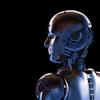
Breaking News
 GOOD BYE VENISON | Now, they're BANNING DEER FARMING and it's going to court in Minnesota.
GOOD BYE VENISON | Now, they're BANNING DEER FARMING and it's going to court in Minnesota.
 Millionaires in 1900, Billionaires Today and Trillionaires in the Future
Millionaires in 1900, Billionaires Today and Trillionaires in the Future
 Brighteon Broadcast News, Jan 9, 2026 - Mike Adams: We Are Building the Infrastructure...
Brighteon Broadcast News, Jan 9, 2026 - Mike Adams: We Are Building the Infrastructure...
 The breaking point: American farms are in crisis
The breaking point: American farms are in crisis
Top Tech News
 World's most powerful hypergravity machine is 1,900X stronger than Earth
World's most powerful hypergravity machine is 1,900X stronger than Earth
 New battery idea gets lots of power out of unusual sulfur chemistry
New battery idea gets lots of power out of unusual sulfur chemistry
 Anti-Aging Drug Regrows Knee Cartilage in Major Breakthrough That Could End Knee Replacements
Anti-Aging Drug Regrows Knee Cartilage in Major Breakthrough That Could End Knee Replacements
 Scientists say recent advances in Quantum Entanglement...
Scientists say recent advances in Quantum Entanglement...
 Solid-State Batteries Are In 'Trailblazer' Mode. What's Holding Them Up?
Solid-State Batteries Are In 'Trailblazer' Mode. What's Holding Them Up?
 US Farmers Began Using Chemical Fertilizer After WW2. Comfrey Is a Natural Super Fertilizer
US Farmers Began Using Chemical Fertilizer After WW2. Comfrey Is a Natural Super Fertilizer
 Kawasaki's four-legged robot-horse vehicle is going into production
Kawasaki's four-legged robot-horse vehicle is going into production
 The First Production All-Solid-State Battery Is Here, And It Promises 5-Minute Charging
The First Production All-Solid-State Battery Is Here, And It Promises 5-Minute Charging
 See inside the tech-topia cities billionaires are betting big on developing...
See inside the tech-topia cities billionaires are betting big on developing...
Google switches on first-of-its-kind advanced geothermal project

Where most geothermal projects need to seek out areas where highly-fractured, highly-permeable hot rocks are easy to get to, the Nevada plant, built in partnership with Fervo, is a pilot to prove a technique borrowed from the oil and gas industry.
As we wrote when Fervo announced its test results in July, the idea is to do for geothermal what fracking did for oil and gas, opening up resources that would otherwise be inaccessible. The company does this by drilling horizontally into deep rock, then injecting pressurized fluid to fracture the rock, creating the kind of fractured, permeable rock you need to harvest geothermal heat energy.
It's a technique Fervo says can also help get a lot more out of an existing resource, and it radically reduces one of the biggest risks in geothermal energy: the risk of drilling way down into subterranean resources and finding they're not usable.
The Nevada plant makes a constant 3.4 megawatts of energy, bringing water up from 3,250-ft-long (990-m) horizontal bores some 8,000 ft (2,440 m) below the surface, at temperatures up to 191 °C (376 °F).
Google originally saw this project as a way to do two things. Firstly, to advance its own progress toward its stated goal of operating solely on clean energy by 2030. And secondly, as a way to give Fervo a commercial jump-start – a proof of concept it could use to accelerate the uptake of advanced geothermal.
And maybe on the second goal, it's made an impressive start. In September, Fervo broke ground on another, much larger project in Utah. The Cape Station project, scheduled for grid connection in 2026 and full-scale power production by 2028, scales things up considerably. It's aiming to produce around 400 MW of energy around the clock.

 Storage doesn't get much cheaper than this
Storage doesn't get much cheaper than this

